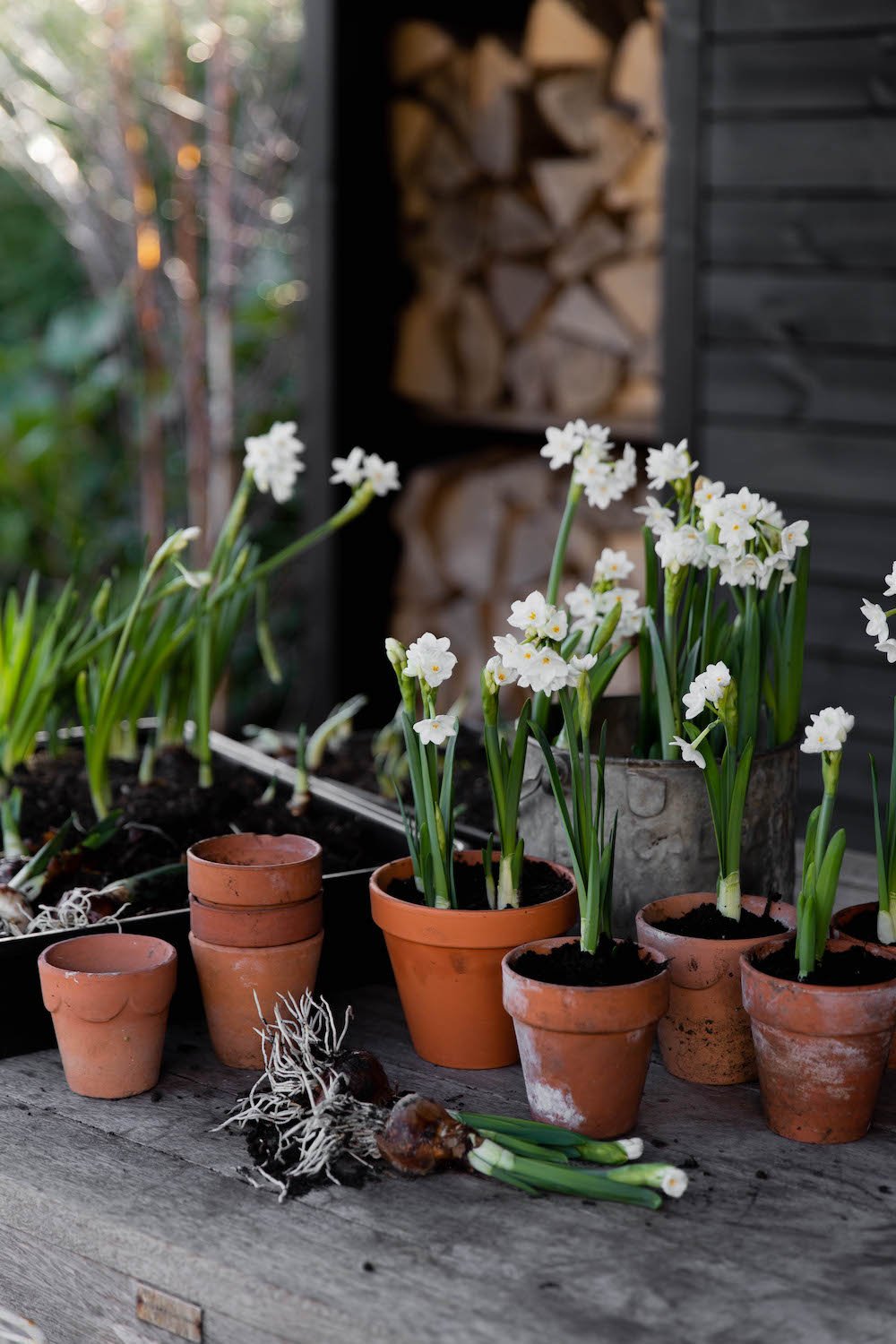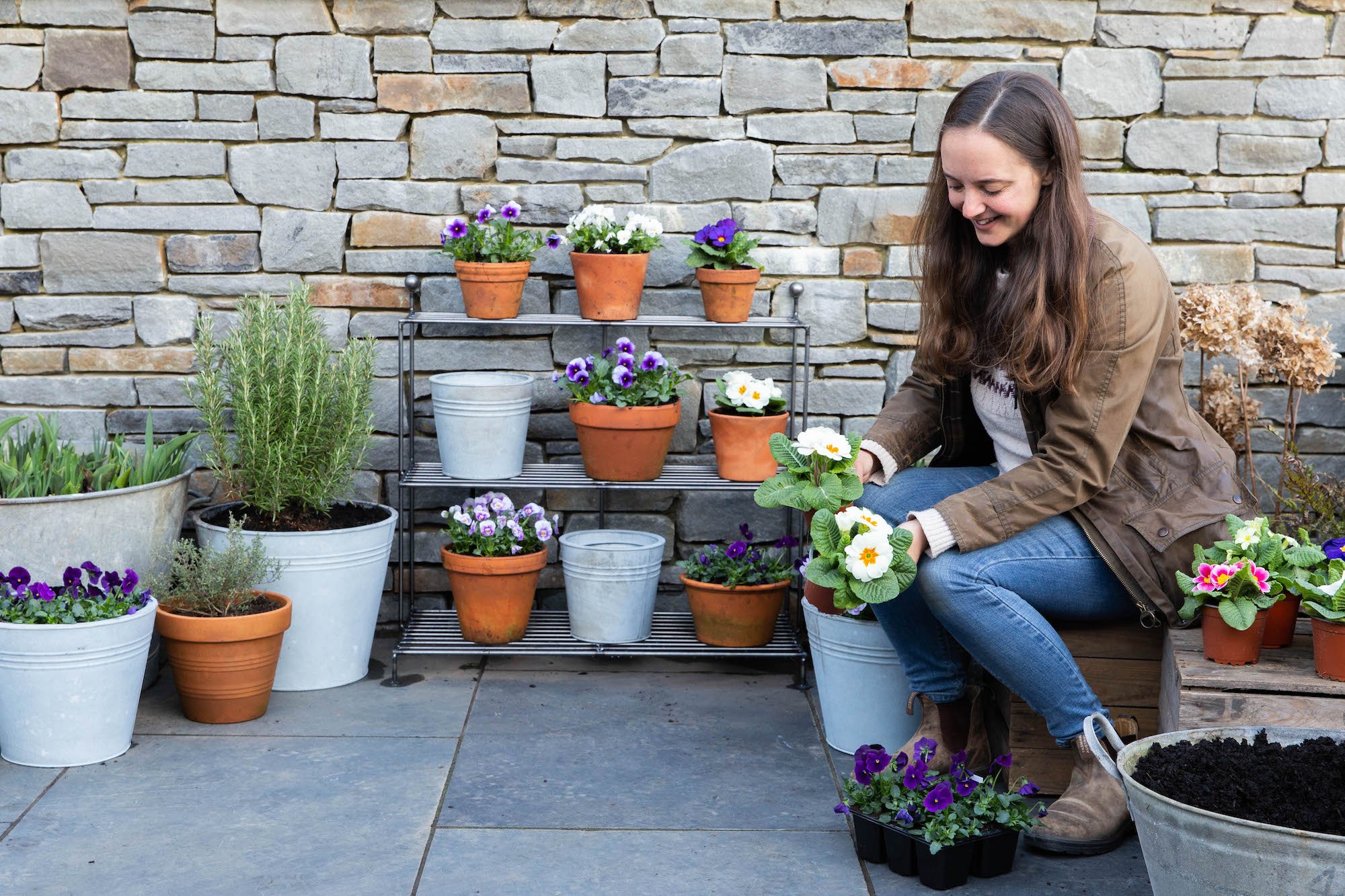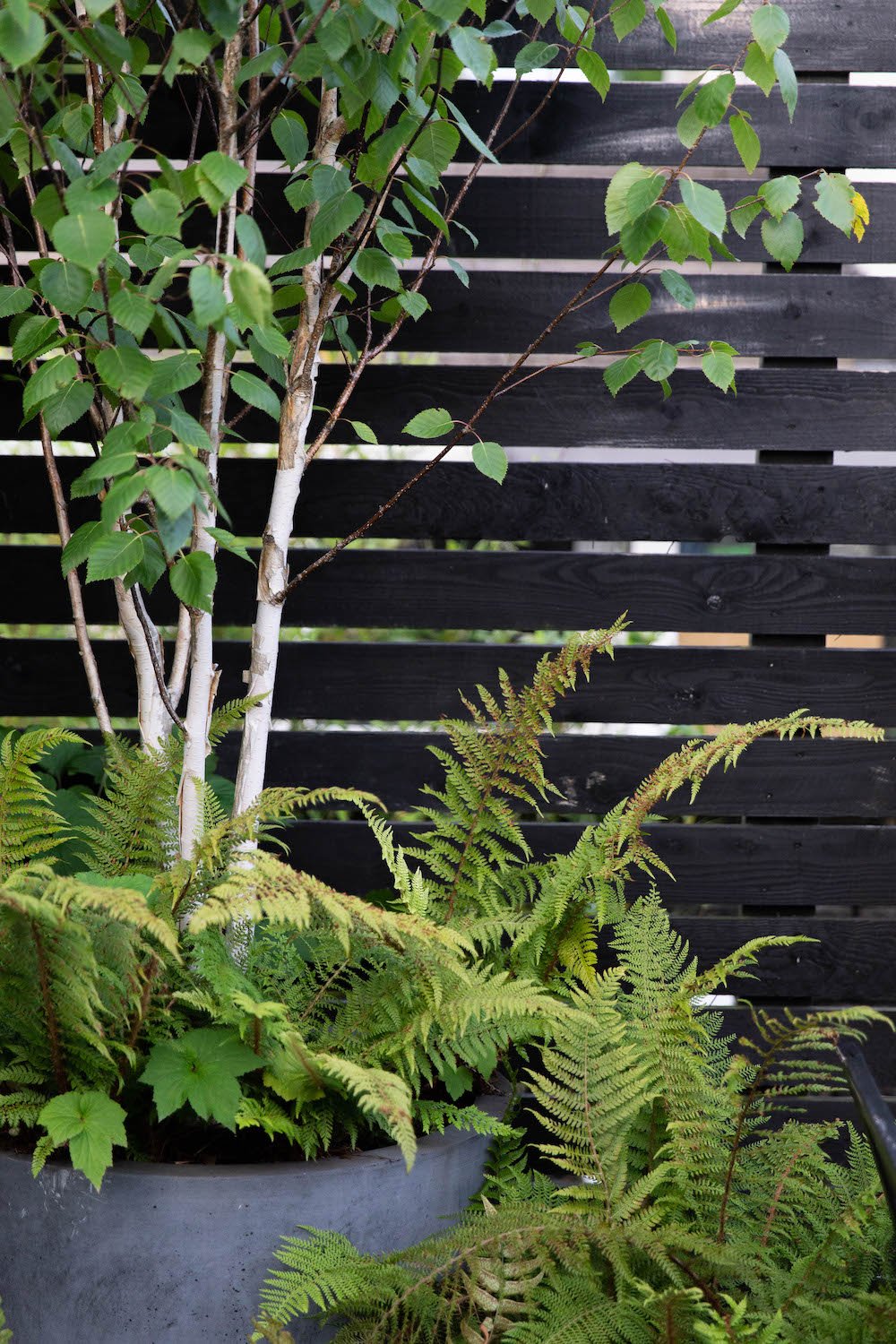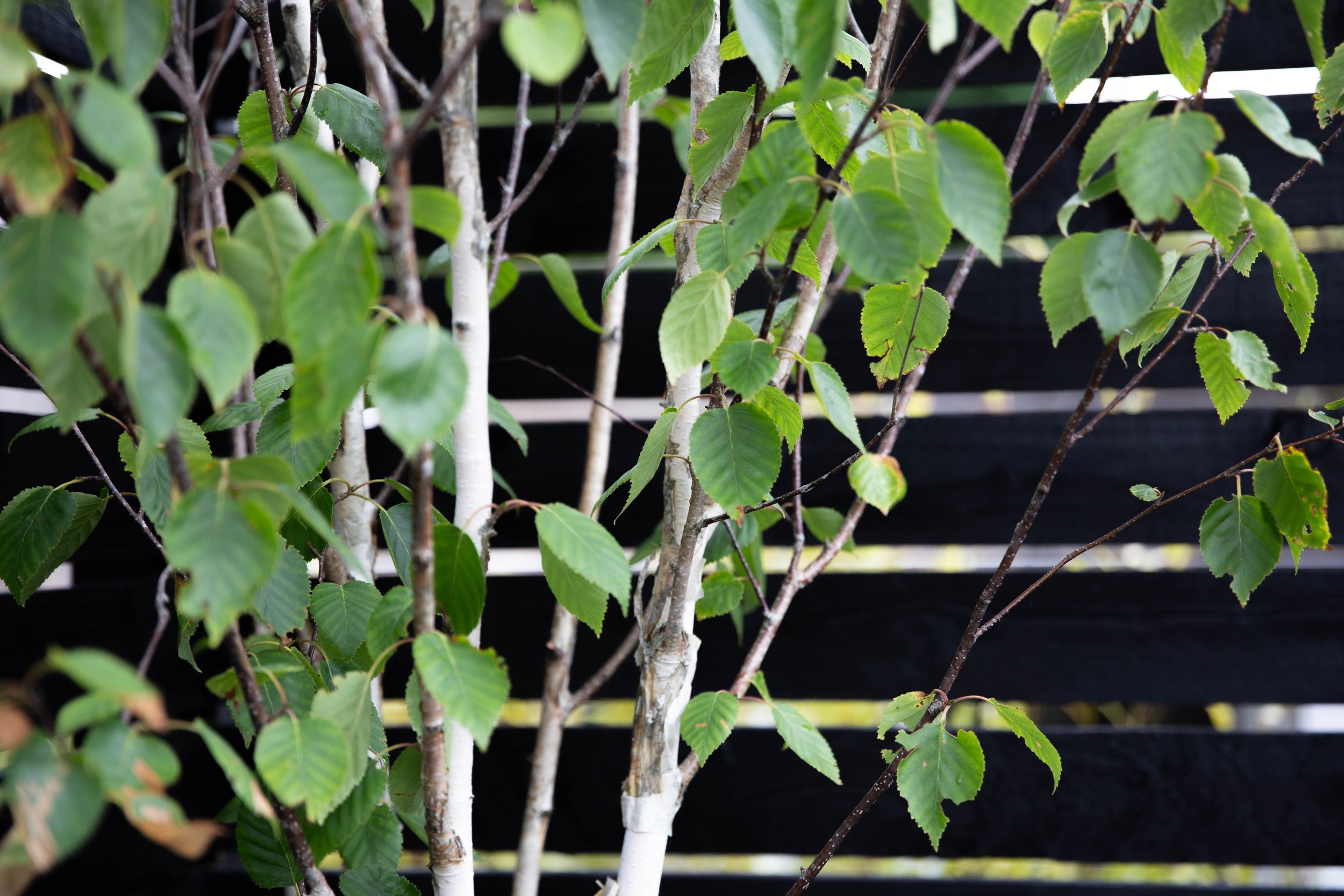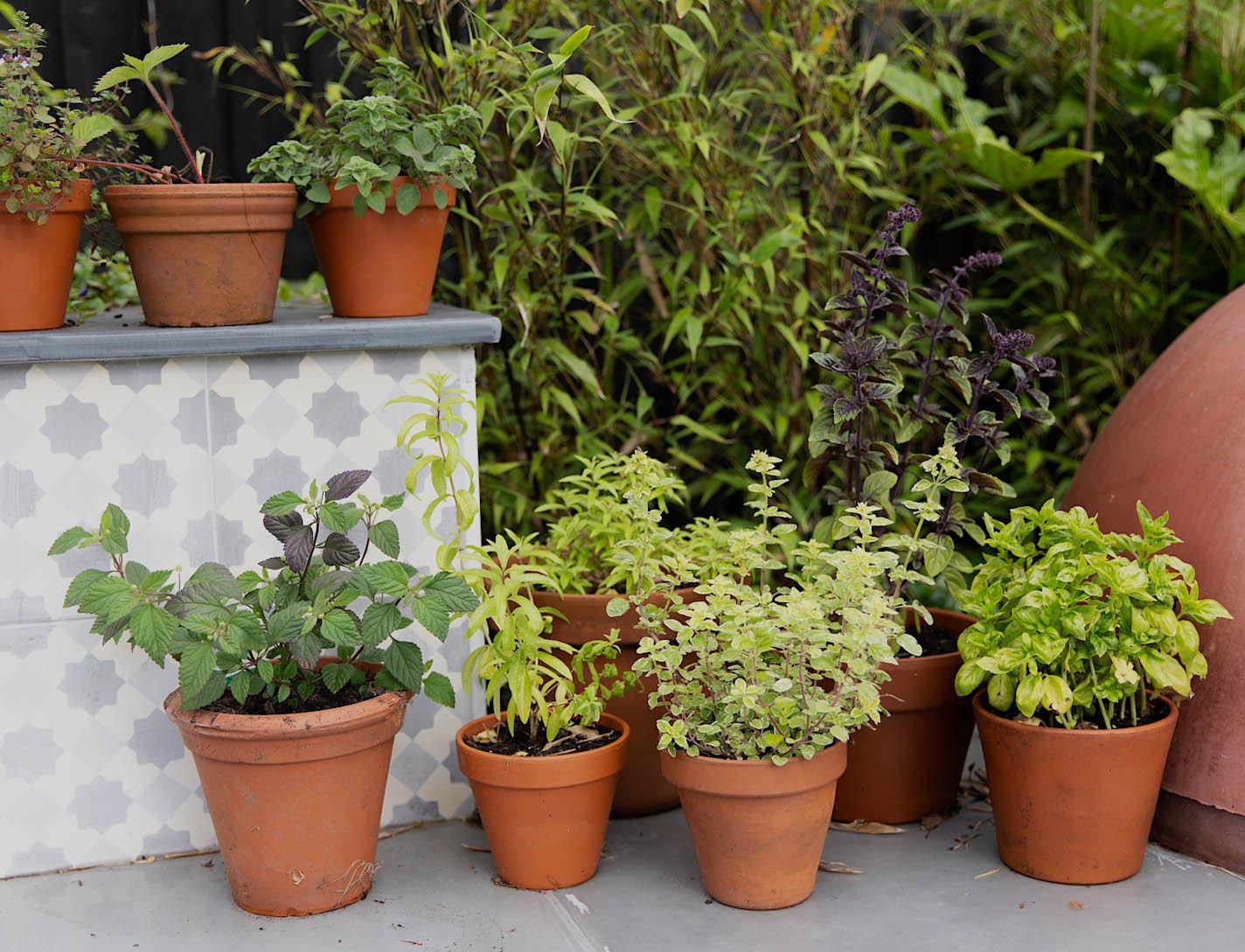How to grow plants in pots
Gardens come in all shapes and sizes, from gigantic plots many acres big, to small, shaded balconies.
If yours in on the smaller end of the scale – or perhaps you have an entirely paved, tarmacked or concreted area – don’t be put off from growing plants. With the addition of a few well-planted pots, every single location can become a green, verdant wonderland, no matter how it starts off…
If you’ve got a love for plants, you don’t need flower beds, open soil or allotments, you can grow pretty much anything in a pot or container: herbs, fruit, vegetables, flowers and even trees!
If you want to transform a space with some well planted pots, here is our guide to get you started.
What to grow?
You genuinely can grow almost anything in pots. Small herbaceous plants, groundcover and bedding are all obvious choices that will do well. Lots of fruit and vegetables grow well in pots: tomatoes, herbs, courgettes are all easy choices, but you can also find fruit trees that have been bred for patio pots, such as cherries, apples, pears, plums and a huge range of other less well-known varieties.
Most of the above would prefer a sunny spot, but if you’ve got a shady location, then think about ferns, hostas (as long as you don’t have too many slugs and snails) or trailing ivy.
Tropical courtyards can appear from nowhere with some big pots of bananas, colocasias, or just a sturdy fatsia.
If you’re new to gardening, keep it simple to start with; try some colourful bedding plants for a bit of summer colour. Most herbs will be very happy in a pot and lavender is a brilliant choice for a sunny patio. A shallow pot with alpines or succulents looks stunning on a garden table, and you can even create a small pond in a pot! We made a series of pot ponds for a client in Cardiff a few years ago and they have attracted frogs, newts and lots of birds who use them to drink and bathe.
Containers are also a great way to contain the growth of particularly vigorous plants such as mint or even bamboo.
If you’ve got a really large container, you could plant a small tree, such as an Acer, or try the gorgeous Hydrangea ‘Annabelle’. You could even sow a mini meadow in a large trough!
The sky – and your imagination – really is the limit. So, assess the space you have: is it in full sun, shade or part shade? How big are your pots? Do you want plants that will look the same year-round, or do you want seasonal interest such as blossom, fruits and Autumn leaves? And, crucially, how much time do you have to care for your container garden? Once you’ve thought through all of these parameters, you should be able to find the perfect plants for your location and your aesthetic!
What pots to use?
There are a huge range of containers available in all different shapes and sizes. In our opinion, go for the biggest pots you can fit in the space. A big pot will be much easier to maintain; you will need to water it less and the plants inside will have more room to grow and be much happier! We would recommend a minimum diameter of about 50cm, but you can go even bigger than this.
Big pots are undeniably expensive, so for more budget-friendly options look into reclaimed and re-used items: old tin baths look fantastic and can often be found cheap (or free), galvanised water tanks are a favourite of ours, and even old barrels can make a great growing space.
Whatever you choose, make sure your chosen container has good drainage holes and, if possible, raise it slightly off the floor, to allow the water to easily drain from the bottom.
How to grow?
Growing in a pot allows you to control the ground conditions and is an easy way to garden if you have a difficult garden – such as heavy clay soil or a garden full of builder’s rubble as is so often the case with new build houses!
Most plants will be happy with a peat free multi-purpose compost. Some plants may prefer ericaceous compost, which gives higher acidity levels to plants that thrive in slightly acidic soil – hydrangeas and blueberries are two of the most commonly grown container plants that would benefit from this.
Once you’ve filled up the container, just position your plants in place and then sink them into the right spaces, removing the plastic pots first. You can keep things simple with one plant in each pot or – if you are planting up really big pots – you can mix up a few different plants that look good together.
A popular container mantra to think of when choosing plants is to include “a thriller, a spiller, and a filler” – in other words, a dramatic plant that grabs your eyes, and provides some height, a plant that “spills” or trails over the front of the pot (muehlenbeckia is our absolute favourite for this!) and a filler plant, that is less exciting, but provides bulk and ties everything together.
The best way to find out what you think looks good, though, is just to try! Match up some plants that look good next to each other, just making sure they enjoy the same conditions (eg, the same light levels and the same watering requirements – it’s no good growing a shade and moisture loving fern next to a cactus, as you can’t keep both happy in the same pot…)
Pot care
There’s no denying that one downside of growing plants in pots, rather than in the open ground, is ongoing plant care. Pots need a lot of watering, especially in dry summer months. And the smaller the pot, the more you’ll need to water. On really hot summer days, small pots can dry out so quickly that you might need to water in the morning and again in the evening.
Check your pots regularly during hot weather and water as much as you need to. Early morning or evening are the best times, as the water doesn’t evaporate off as quickly.
In winter months, some pots can freeze and then crack when they thaw – terracotta is especially prone to this. Putting pots onto “pot feet” helps to raise them off the ground and increase drainage, which means they are less likely to be sitting in water that freezes.
And all plants that are growing long term in pots will need regular feeding. Choose a slow release fertiliser, which can be added in Spring, if you’re likely to forget. Or, use a regular liquid feed in the growing season (Spring to Summer) – we use liquid seaweed, which is organic and contains all the nutrients that plants will need.
As plants outgrow their space, you may need to divide them or re-pot them into a bigger size. Autumn is the best time to do this, when you can check over everything and make any adjustments needed.
Inspiration
There are some really impressive pot gardens out there. If you want to get some good inspiration, here are some of our favourite places:
- On Instagram, check out Mettekrull. A seriously impressive garden, almost all grown in pots and set off beautifully against the dark summer house of dreams
- Sarah Raven’s website has a whole section on plants for containers, including some collections of plug plants that have been matched together (for shady spots, for long term flowering and so on…)
- Grow fruit and vegetables in pots is an excellent book by Aaron Bertelsen, the vegetable gardener at Great Dixter. It has inspiration and plans aplenty for growing fruit and veg in containers, along with recipes for once you’ve grown them…
- Gardens Illustrated container planting series has some beautiful plant combinations for pots. Perfect for inspiration, or simply to copy if you’d like a paint-by-numbers guide to getting started on some eye catching pots: container flower pot displays.


